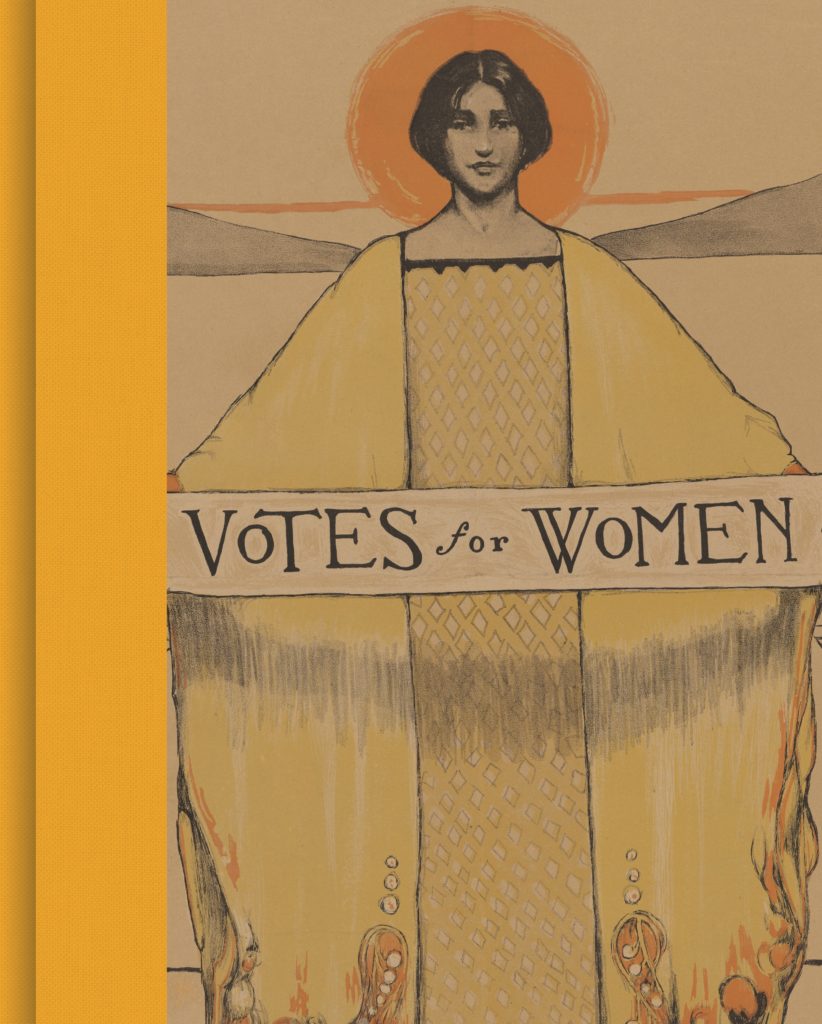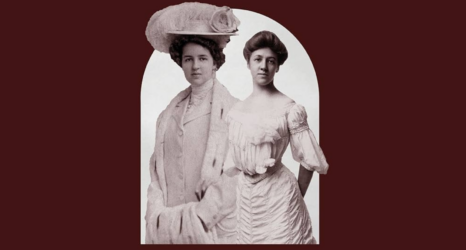
As the last state ratified the Nineteenth Amendment, celebrations erupted across the country. Movement leader Alice Paul stitched the final yellow star onto her National Woman’s Party flag, three bold stripes of purple, cream and gold. For every state that ratified, Paul had added a star.
States had quickly fallen in line, slowed and then stopped—short of the 36 states needed. The long battle came down to one man in Tennessee, a southern state known for its fierce opposition to women’s rights. Like many, Harry T. Burn, the Tennessee legislature’s youngest member, only 24 years of age, declared his objection. It seemed clear the amendment would not pass. But on receiving a letter from his mother urging his support—in which she instructed him “to be a good boy”—Burn changed his vote.
Surprising everyone, the Tennessee legislature approved the amendment by a one-vote margin. The Nineteenth Amendment to the U.S. Constitution was finally ratified on August 18, 1920. Hastily affixing the last star, Paul rushed outside of her headquarters and triumphantly unfurled the flag.
Emphasizing the long struggle that had culminated in this moment, newspapers heralded the so-called Anthony Amendment “as a living monument to its dead framer, Susan B. Anthony.” History was invoked again and again. The United Press syndicate headlined its wire story the “Outline Story of Suffrage in the United States.” Sent to hundreds of subscriber newspapers, the piece recounted a story that many knew by heart: that the now triumphant movement took shape when “in 1848 at Seneca Falls, NY, Miss Anthony called to order the first national woman’s [rights] convention.” There, Anthony had spearheaded women’s demand for the vote. “She knew her cause was right,” the story continued and “she assumed national control of suffrage matters on the occasion of Seneca Falls.”
Women in the United States, it was said, had finally won the vote. Errors abounded.
The Anthony Amendment, as it remains known today, was actually written by another activist, Anthony’s close friend Elizabeth Cady Stanton. Anthony had not even been at the famed 1848 meeting in Seneca Falls. Yet newspapers and celebrants alike constantly placed her there. Anthony had not joined the cause of suffrage until a full three years later, in 1851, when she met Stanton, who recruited her.
Women had not even won the right to vote on that historic day in August 1920. The amendment stipulated in full that “the right of citizens of the United States to vote shall not be denied or abridged by the United States or by any State on account of sex.” Those 28 words failed to prohibit other forms of discriminatory practices, such as poll taxes and literacy tests, which were then law in several states across the country. Together, with outright violent intimidation and targeted administration, those legal prohibitions continued to bar from the polls many women of color. When these women came to the leading suffrage organizations asking for help in securing voting rights, white women turned them away. The vote, a fight begun by Anthony in 1848, it was said, had been won.
As we ponder how to commemorate this 2020 centennial moment, it behooves us to attend to the memories that suffragists themselves handed down. We must interrogate how and why celebrants in 1920 so assuredly placed Anthony at Seneca Falls, even though she had not been there, and why they so confidently used Seneca Falls as the movement’s beginning, when the movement actually had no singular point of departure. When we pull at that thread and ask how this story came to be—not the facts of the 1848 convention itself, but the story about that convention, along with the lessons that inhered within it—we unravel something that we were not meant to see: history-telling as an important form of activism.
The reporters were absolutely right—history mattered—but not in ways that they fully grasped. They missed how, in the aftermath of the American Civil War, Elizabeth Cady Stanton and Susan B. Anthony had invented this Seneca Falls origin story in an effort to shape a postwar suffrage campaign. They missed how memory itself had played a critical role in the long fight for the vote.
When Stanton and Anthony first argued that the suffrage movement had begun in July 1848, when Stanton called a women’s rights convention in the small hamlet of Seneca Falls, where Stanton then lived, they were not reciting merely objective, agreed-on facts. They, along with others in the movement, did not tell this origins tale until some 30 to 40 years after the convention. The story was a post–Civil War creation. Yet, as in 1920, people today tell the story of Seneca Falls as if it has always been true and they forget to attend to its history. That oversight has resulted in a misunderstanding of the multiple facets of this long campaign.
Beginning in the 1870s, Stanton and Anthony first turned Seneca Falls into a story they could use to combat post–Civil War challenges. This fabricated memory helped them consolidate their own deeply contested postwar leadership; set an agenda for a sprawling and to their mind, undisciplined postwar women’s movement; make a pointed and controversial public argument for the necessity of women’s suffrage; and sustain the movement in the face of repeated, often devastating, setbacks. They carefully adapted and honed the story to address postwar fights while gently persuading more and more suffragists to adopt it. In doing so, people espoused, however unconsciously, the lessons Stanton and Anthony meant to impart.
This origin story was not neutral. In fact, its appeal and its potential derived from its underlying political motives. The pair recognized that history-telling is and could be, a decisive form of power.
This was not unique to the story of Seneca Falls. All remembering, all history-telling, comes with fraught interpretative choices and implicitly coded lessons. The post–Civil War origins and purposes of this story would later be forgotten, however. Instead, it would seem to have been miraculously and unassailably true from 1848 forward.
But stories don’t write themselves. People make stories. And people made this story, well after the event. They made it as a tool in their postwar fight for the vote. And it became a tool that served them well.
Attending to that history, that process, tells us a great deal about how the movement restarted, defined and sustained itself after the bloodiest war in American history and how this social movement endured over roughly 75 years. It shows us how remembering was an essential piece of the long fight for the vote, and how remembering is always loaded with significant political consequences.
None of this is to say that the Seneca Falls tale is unimportant. Indeed, when we look at its history and functions as an invented story, it has been much, much more important than we have realized. To argue that the particular significance assigned to it in the aftermath of the war was retrospective and retroactive does not mean that it was not also important in 1848. To raise questions about where our understanding of that significance arises and to suggest we reexamine the narrative around the events of 1848 is not to demolish Seneca Falls as historically significant. In fact, it is to be responsible in that assessment.
What we remember, and what we forget, matters. Stanton and Anthony, more than any other suffragists, deployed memory as a weapon in their post–Civil War battle, both inside and outside the movement. But in the end, the story they created, the story of Seneca Falls, may tell us much more about the 1870s and the 1880s than about the 1840s.
As we approach 2020 and prepare to remember this remarkably important, if troubled, campaign, looking back reminds us of the power of memory. And it urges us to be thoughtful in the present in how we remember that past. For in our memories inhere present-day lessons as well, just as they existed in Stanton and Anthony’s memories.
If we remember 1920 as a victory, the victory, the conclusion of the 1848 story, we erase, for example, the long history of struggle for voting rights on the part of women of color. These women were not enfranchised by the Nineteenth Amendment, owing to state laws that barred them on the basis of criteria other than that of “sex.” And if we frame our story of the 2020 anniversary with the story of Seneca Falls, as is likely to happen, what lessons are we imparting today?
Our tendency to view the past as transparent truth has the potential to blind us to all the work that remains to be done. So, as we continue to struggle for justice and equality in the present, and as we move forward into the future, we must be mindful of what and how we remember.





